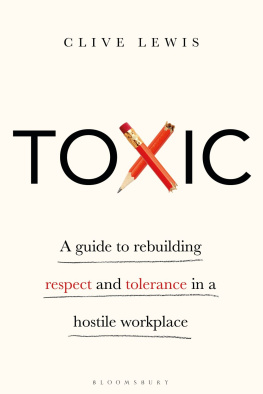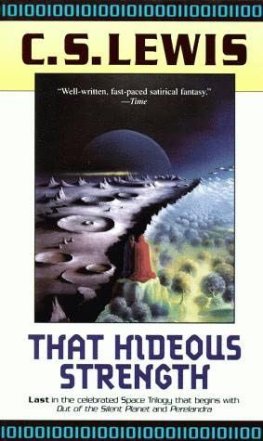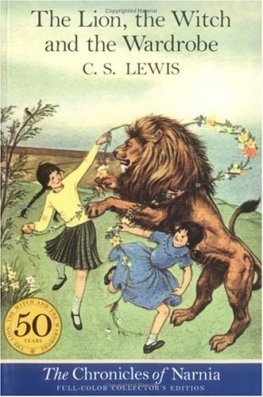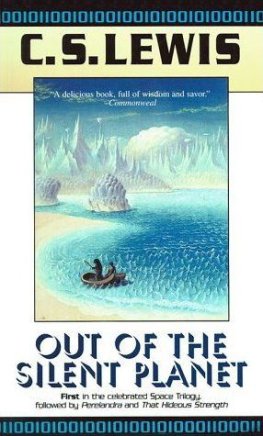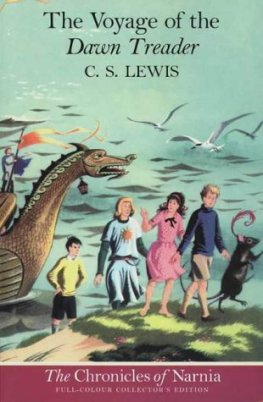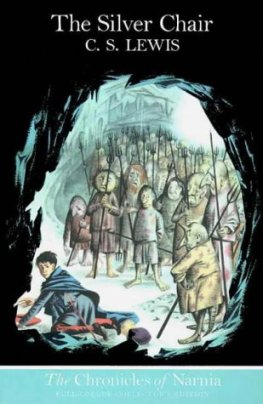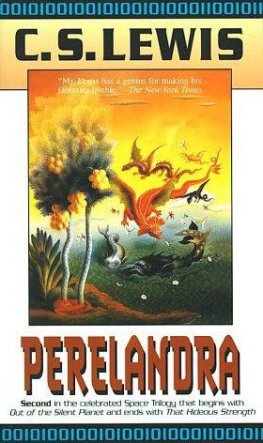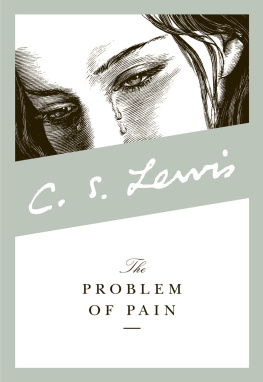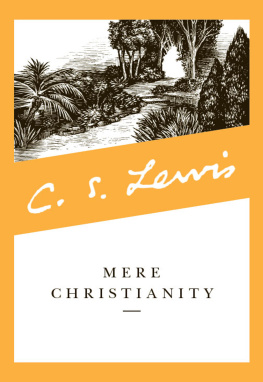Clive Lewis - Toxic
Here you can read online Clive Lewis - Toxic full text of the book (entire story) in english for free. Download pdf and epub, get meaning, cover and reviews about this ebook. year: 2021, publisher: Bloomsbury Publishing, genre: Romance novel. Description of the work, (preface) as well as reviews are available. Best literature library LitArk.com created for fans of good reading and offers a wide selection of genres:
Romance novel
Science fiction
Adventure
Detective
Science
History
Home and family
Prose
Art
Politics
Computer
Non-fiction
Religion
Business
Children
Humor
Choose a favorite category and find really read worthwhile books. Enjoy immersion in the world of imagination, feel the emotions of the characters or learn something new for yourself, make an fascinating discovery.
- Book:Toxic
- Author:
- Publisher:Bloomsbury Publishing
- Genre:
- Year:2021
- Rating:4 / 5
- Favourites:Add to favourites
- Your mark:
- 80
- 1
- 2
- 3
- 4
- 5
Toxic: summary, description and annotation
We offer to read an annotation, description, summary or preface (depends on what the author of the book "Toxic" wrote himself). If you haven't found the necessary information about the book — write in the comments, we will try to find it.
Toxic — read online for free the complete book (whole text) full work
Below is the text of the book, divided by pages. System saving the place of the last page read, allows you to conveniently read the book "Toxic" online for free, without having to search again every time where you left off. Put a bookmark, and you can go to the page where you finished reading at any time.
Font size:
Interval:
Bookmark:

A powerful and timely book that combines practical examples with deep emotional insight, providing invaluable advice for everyone in todays modern workplaces.
Dr Ann Limb CBE DL, Chair, The Scout Association
Toxic is an important book and makes a powerful argument for Executives to rethink about the business case for non-toxic environments. Lewis makes his points persuasively, underpinned by the evidence.
Steve Murrells, Chief Executive, Co-op
Toxic is hugely insightful, and offers practical tips based on real examples to truly avoid or address toxic workplaces and relationships. This book reinforces the need for psychological safety in creating the right culture, and the reinforcement of the underrated but essential simple human traits of civility and respect hit you like a high speed train. This book is a must read!
James Devine, Chief Executive, Medway NHS Foundation Trust
Toxic is an excellent guide for organizations to learn how to improve cohesion at an individual, team and organizational level. We will certainly be drawing on its content.
Dr Neil Pease, Chief People Officer, Nottingham University Hospitals

Contents
Toxic: A Guide to Rebuilding Respect and Tolerance in a Hostile Workplace , like all my books, has been a pleasure to write, even though writing a book never gets any easier. Similar to books written before this one, I was able to do much of my writing on a train, plane or in a hotel room whilst travelling on business. As with any project of significance, it is not possible to produce a considerable piece of work alone. I am very grateful to the people who have made the publication of this book possible, including David Richbell. David kindly introduced me to the Bloomsbury publishing family after I wrote a chapter for him in his book How to Master Commercial Mediation almost ten years ago. Without him, it is unlikely that this book and the one before it, How to Master Workplace and Employment Mediation , would be available to the mass market. Sadly, David died in September 2018. Likewise, I am grateful to Andy Hill for introducing me to his colleagues, Matt James and Ian Hallsworth, my editors at Bloomsbury. Their counsel, guidance and advice has been first class.
I am also grateful to Helen Robinson, my colleague for over ten years, who has helped with the finessing and fact checking of the book.
My thanks must also go to Lesley Dwyer, Andy Hardy and Steve Murrells, whose interviews are featured within the book. I am particularly grateful to Helen Webb for introducing me to Steve.
I am thankful to the many people and organizations I get to work with every day. Much of what is written is based on my experiences from the privilege offered to me to help numerous workplaces. As I often say, I dont have a job, I have a vocation.
Finally, to my children, Elizabeth and Jonathan, who saw less of me whilst I devoted my time to writing. I love them both so much and look forward to making it up to them.
The world of work has changed beyond all recognition over the last 30 years. Workplaces have become hotbeds of conflict toxic environments littered with eggshells. For the first time in history we have five generations making up the workforce, each with a different take on work ethic and values. This adds a new dimension for line managers to grapple with.
In 2018, Oxford Dictionaries chose toxic as their Word of the Year. They stated that searches for the word on their website had increased by 45 per cent, capturing the mood, ethos and preoccupations of the year that continue to this day. A spokesperson for the dictionary referred to the word toxic now being used to articulate a set of conditions one might find themselves experiencing.
Again, in 2018, an NHS investigation report hit the headlines. The report focused on the work of cardiac surgeons and cardiologists at St Georges Hospital, Tooting, London. For the first time, a link was made between a toxic workplace and the impact on patient care and quality. Levels of mortality at the hospital were reported as being twice above the national average.
Some of us have the misfortune of working with colleagues who are hostile and have a lack of regard and compassion for others. Others might work with people who mistreat others, are undermining, manipulative and leave an ingrained mark on the workplace. This much-needed book aims to distil the problems associated with toxic workplaces, describe what a toxic workplace looks like, raise the conversation and, crucially, provide options on what can be done about it. Every worker irrespective of age, gender or ethnicity will recognize the themes covered here. At some stage we have all been involved in or witnessed tension, conflict or awkward moments we would rather not have experienced. I will draw on a number of scientific terms to help our understanding of the impact of a toxic workplace. Thinking further about science, the Oxford English Dictionary describes toxic as very bad, unpleasant or harmful. A permanently toxic workplace can lead to environments that become anoxic (without oxygen). Workers might describe their surroundings as stifling or even suffocating and seek ways out which might include sick days, looking for an internal move or leaving the company entirely. All these actions become justifiable as one seeks any opportunity possible to come up for air.
Workplaces do not have to be toxic, but a collective response is needed in order for them to become more respectful and tolerant. I refer to this as the Toxic Triad and the three areas involved are the organization, line managers and employees. There has to be shared responsibility; there also needs to be a different way of thinking.
Three of the most difficult things for any of us to do are:
return love for hate;
include the excluded;
admit when we are wrong.
Here is a simple example. When someone offends us, we often find it more comfortable to ignore or avoid them, or alternatively search for masses of people to share our story with. Our belief can be that if we take this approach we will, in return, hurt our opponent. This is true partly. The aspect that we might not fully realize though is that in doing so we are also hurting ourselves. To continually hold someone in contempt, ignore them, or speak harshly to them takes energy. The energy is negative, tiring and debilitating. This type of behaviour can be the beginning of what might lead to a toxic environment.
The effect can be devastating and incredibly painful. Sometimes the pain is emotional and on other occasions it can be physical. When we are in conflict our bodies produce the hormone cortisol, which can drive us to protect ourselves. The effect of the cortisol can last for up to 26 hours. The more we think about it, the longer the impact. We also know from experimental studies that being subject to rudeness impairs cognitive skills such as memory and attention and also harms cooperation and the willingness to help others. By the way, its also a terrible waste of our lives. But it is not just simply about one-on-one interpersonal relationships in the workplace. At the organizational level, toxic environments can be hugely costly in both time and money. If you are in a commercial environment it can also be costly in terms of competitive advantage. It is in the interest of employees, customers, shareholders, patients and other stakeholders to have workplace environments which are more respectful and tolerant.
Throughout the book, I touch on a whole range of areas that will help you, whether you are a chief executive, line manager, employee, trustee or even an unpaid intern, graduate or apprentice just entering the workplace for the first time. In many places I have changed certain names and details in order to protect the identity of the individuals involved, but the stories are all from my own experience and interactions.
Font size:
Interval:
Bookmark:
Similar books «Toxic»
Look at similar books to Toxic. We have selected literature similar in name and meaning in the hope of providing readers with more options to find new, interesting, not yet read works.
Discussion, reviews of the book Toxic and just readers' own opinions. Leave your comments, write what you think about the work, its meaning or the main characters. Specify what exactly you liked and what you didn't like, and why you think so.

